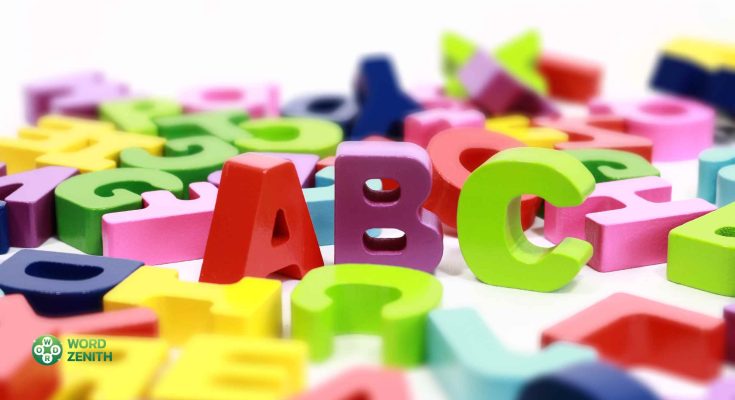Written language is among the most important achievements of mankind. Alphabets and scripts were created to enable the recording of information, the sharing of ideas, and the passing down of knowledge, which could have been impossible in any other way.
Throughout history, written languages have undergone remarkable evolutions, spreading across continents and cultures.
This article examines three fascinating stories about alphabets, writing systems, and languages that demonstrate how boundless human imagination can be.
These are chronicles of ancient scripts, coded messages, and global communication, among others, marking some of the many adventures people have had in exploring and spreading languages worldwide.
Deciphering Ancient Egyptian Hieroglyphs: Unlocking a Lost Language
For more than a thousand years after the demise of the ancient Egyptians, their complex system of writing remained a mystery to humanity.
Known as hieroglyphs, this script constituted hundreds upon hundreds of fine symbols or pictures that, for centuries, were indecipherable. It was an inscrutable code carrying messages in an unknown language.
The quest to solve this age-old enigma began with an encounter with Rosetta Stone in 1799. The Rosetta Stone was recovered by French soldiers during the Napoleonic invasion of Egypt; it was a granodiorite stele that bore a decree rendered in three differing forms: hieroglyphs (Democratic and Ancient Greek), one of which was its translation into Greek, finally providing insight into decoding hieroglyphics.
In minute analyses, French linguist Jean-François Champollion detected phonetic as well as alphabetic components within the Egyptian symbols using his Rosetta Stone. In 1822, he deciphered grammar and thus broke free from the constraints imposed by ancient Egypt’s hieroglyphic characters representing words graphically to give a linguistic picture illustrating their civilization.
Champollion’s breakthrough built on work done earlier by such scholars as Johan David Åkerblad and Thomas Young, who also tried to decipher the code of the Rosetta Stone. These pioneers introduced a platform for understanding this intricate writing system that was used by scribes as well as artisans more than three millennia ago.
The translation of hieroglyphs has opened up an enormous wealth of ancient Egyptian literary and historical materials, leading to a boom in Egyptology studies.
It has provided historians with amazing insights into the beliefs, inventions, and civilization of this classical ancient culture. The disentanglement of hieroglyphics will forever be remembered as one of the greatest achievements in the history of mankind’s linguistics.
Navajo Code Talkers: A Secret Weapon in World War II
In times of war, secure communications can make all the difference. During World War II, Navajo tribe members were recruited by the United States Marines to develop an unbreakable military code based on their native language. They served as code talkers, transmitting critical messages through Navaho, thereby misleading Japanese code breakers and giving great impetus to US victories in battles.
The Navajo language, with its unwritten nature and being known only by those born into it, seemed like the perfect choice for use as a cipher on battlefields. Syntaxes, along with tonal complexities, appeared hopelessly bewildering beyond outsiders’ comprehension.
Pearl Harbor triggered recruitment exercises that saw Navajo code talkers hired from 1942 onwards amid a frantic search for more reliable methods to pass classified information across U.S. boundaries.
Once secrecy had been sworn to, prospective code talkers had to first of all understand the intricacies of military parlance and ideas. This was done by coining Navajo names for such things as airplanes, ships, ranks, and weapons.
They came up with over 600 new words for military terms in Navajo that did not have a direct translation, such as “dive bomber” (ginitsoh) or “tank” (chay-da-gahi).
In the field, code talkers worked in pairs, speaking fast-paced Navajo into radios. Enemy codebreakers found the codes impossible to decipher since they were too intricate. These messages from code-talkers frustrated Japanese cryptanalysts during every single Marine assault between 1942 and 1945.
The unbreakable nature of the Navajo code was kept classified until 1968, after the war ended. It is said that this program saved many lives and gave the US Marines the battlefield advantage that helped win the Pacific War.
Yet their brave service went unrecognized among these Native American Code Talkers for many years, but it represents one of the most imaginative uses of language in any history of war.
Unicode: Encoding All Writing Systems Around the World
In a world constantly becoming more globalized, how can computers handle every language and writing system? Unicode holds an answer to this dilemma.
It is a computational standard facilitating the exchange and visualization of text across any script, including Arabic and Zulu, among others. Moreover, it allows the digital existence of over 143,000 characters written according to over 150 modern and ancient scripts.
Computer scientists started developing Unicode in 1987 as part of their grand ambition aimed at resolving confusion associated with text distortions when sharing documents rooted in different languages. Back then, software vendors used proprietary character encodings, which led to character corruption or illegibility upon transfer between applications.
Unicode established a universal way of representing text so that all writing systems in the world could be accommodated in one system. It encodes each letter, ideogram, or sign with a unique number. U+0639 is the Unicode value for the Arabic letter “in.”.
Therefore, any software, platform, or device will correctly render that character.
Implementing this technology demanded cooperation among international working groups and software companies. Initial versions had primarily European languages, but now they have expanded to include more scripts. In 2019, Unicode 12.1 offered support for over 150 scripts, including old languages such as Hieroglyphic Luwian and Old Hungarian.
There has been a steady rise in Unicode adoption, enabling communication and the sharing of information between regions across the globe. The major technology firms and web standards behind it have made it globally accepted as the central text encoding mechanism. Therefore, through its emphasis on digital preservation of lesser-used languages and scripts, Unicode increases the availability of diverse written works in modern times.
The encoding of so many world languages is a remarkable feat of international cooperation that should not go unnoticed. This shared digital “language” continues to evolve, ensuring our global writing systems can interact smoothly through the Internet and associated technologies.
Read More: Word Wonders: 4 Mind-Blowing Language Feats That Defy Expectations
Word Wonders: 4 Mind-Blowing Language Feats That Defy Expectations
The Permanence of Written Language
Such narratives illustrate some of the numerous ways that people have connected throughout history by inventing written language systems, which they then carried into various cultures around them. From cracking Egyptian hieroglyphics to using Navajo code talkers up until the development of Unicode, we have gone beyond what was expected when it comes to our communicative abilities.
One of the most profound motivations that has driven mankind has to do with the need to communicate ideas, retain knowledge, and cross cultural boundaries. Our alphabets and written languages have made it possible for us to go beyond ourselves in incredible ways. From simple picture representations on clay, this has grown into an instantly connected digital network across nations.
Obviously, language will face different challenges and opportunities in the future. Nevertheless, should we reflect on our journey this far with an open-mindedness that seeks knowledge, then there is no limit to where our linguistic voyages can take us. Whatever lies ahead, humanity’s evolving narrative will always remain intertwined with the ageless enchantment of writing.




